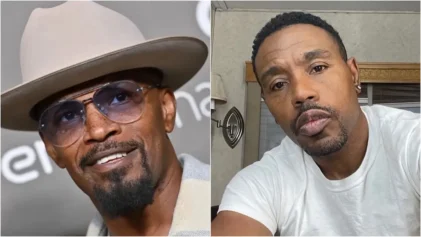Samuel L. Jackson and Jamie Foxx have defended Quentin Tarantino‘s use of the N-word in his films. They did it in the upcoming documentary “QT8: The First Eight,” where some of the people he’s worked with talk about his past projects.
Jackson has starred in five of Tarantino’s movies so far, “The Hateful Eight” in 2015, “Django Unchained” in 2012,”Kill Bill, Vol. 2″ in 2004, “Jackie Brown” in 1997 and “Pulp Fiction” in 1994.
Foxx also played in “Django Unchained” as did Kerry Washington, and like Jackson he portrayed a slave. In that film, the N-Word was reportedly used 110 times, and in Jackie Brown it was said 38 times, which Spike Lee talked about in 1997.
“I’m not against the word, and I use it but not excessively,” said Lee back then. “And some people speak that way. But Quentin is infatuated with that word.”
However, in the “QT8: The First Eight,” Jackson said Tarantino’s use of the N-Word has to do with his desire to write a character accurately, in terms of how that person speaks and the era they come from.
Jackson also pointed to the 2013 Steve McQueen-directed film “12 Years a Slave’ to make his point, where one of the characters says the N-word multiple times while singing to slaves.
“You take ‘12 Years a Slave,’ which is supposedly made by an auteur. Steve McQueen is very different than Quentin,” Jackson explained. “When you have a song that says N-word in it 300 times, nobody says s—.”
“So, it’s OK for Steve McQueen to use [N-word] because he’s artistically attacking the system and the way people think and feel, but Quentin is just doing it to just strike the blackboard with his nails?” he then asked. “That’s not true. There’s no dishonesty in anything that [Quentin] writes or how people talk, feel, or speak.”
And for Foxx, the actor said he had no problem with the use of the N-word in “Django Unchained.”
“I understood the text. The N-word was said 100 times, but I understood the text. That’s the way it was back in that time,” he explained.


